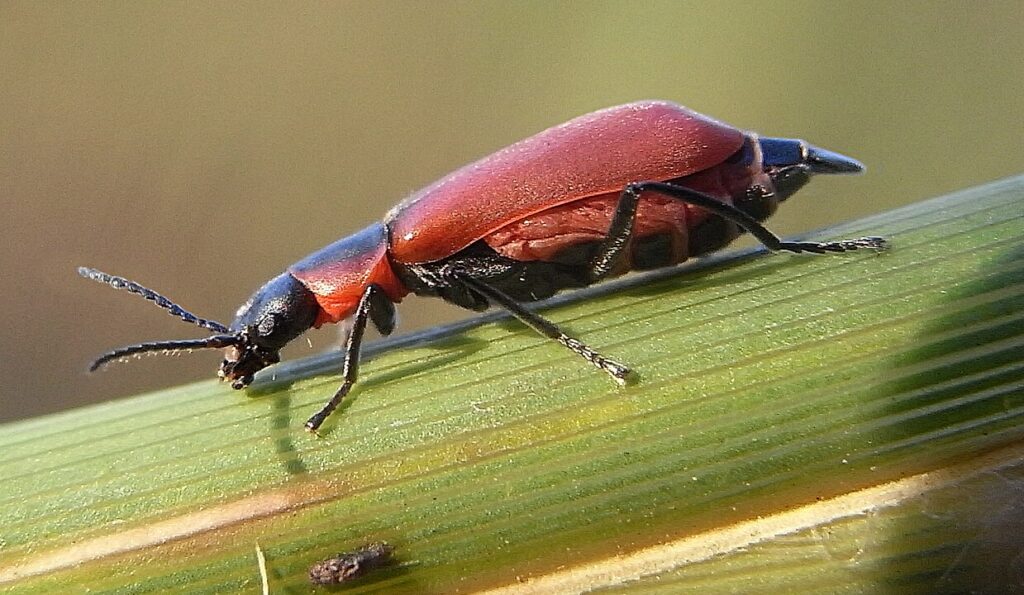
Melyridae spp (Soft-Winged Flower Beetles)
Melyridae is a diverse family of beetles commonly known as soft-winged flower beetles. These insects are often small to medium-sized and are most frequently found on flowers, where they feed on pollen, nectar, and sometimes other small insects.
Description
Melyridae beetles typically have soft, flexible elytra (wing covers), a feature that gives them their common name. Their bodies are usually elongated and covered in fine hairs or pubescence, often giving them a somewhat velvety appearance. Coloration varies widely between species, with some showing metallic hues or bright contrasting patterns, which may serve as a form of mimicry or warning.
Habitat and Distribution
These beetles are cosmopolitan in distribution, occurring on every continent except Antarctica. They are especially abundant in temperate and tropical regions, where flowering plants are plentiful. Adults are most commonly found on flowers in meadows, gardens, forests, and along roadsides.
Diet and Behavior
Adult Melyridae primarily feed on pollen and nectar, playing a minor role in pollination. Some species also prey on small arthropods or scavenge dead insects. Larvae are generally predatory or saprophagous, living under bark, in leaf litter, or in decaying organic material, where they feed on other small invertebrates or detritus.
Ecological Role
While not as well-studied as many pollinators, soft-winged flower beetles contribute to ecosystems by participating in pollination and helping control populations of other insects through predation. Their larvae also aid in decomposition processes, recycling nutrients back into the soil.
Taxonomic Notes
The family Melyridae is taxonomically complex, including several subfamilies such as Malachiinae and Dasytinae, some of which were once considered separate families. There are thousands of described species within the family, and ongoing revisions continue to clarify relationships among genera.
